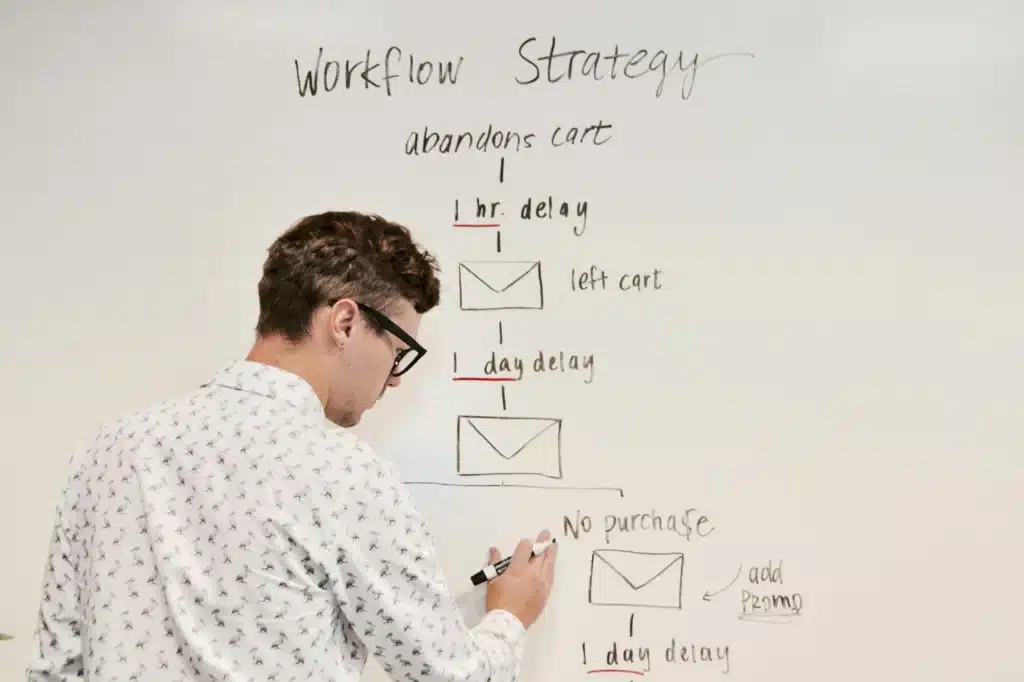When building a startup in 2025, one thing is sure: speed and clarity matter. Many founders pour resources into a full product too early, only to discover they’ve built something nobody really wants. That’s why starting with an MVP (Minimum Viable Product) is one of the smartest moves you can make. An MVP helps you validate ideas, test assumptions, and connect with real users without draining your budget or wasting time.
Startups fail due to a lack of market demand. A strong MVP reduces this risk by allowing you to launch lean, gather insights, and pivot before it’s too late. Whether you’re planning an MVP website, exploring solutions for MVP healthcare, or looking for the best MVP odds of startup success, the right approach makes all the difference.
At Charisol, we specialize in designing and building MVPs that are not only fast to market but also meaningful. With our human-centered design process and agile methodology, we help founders create products that matter and scale.
RELATED POSTS:
Why a Strong MVP Matters for Founders in 2025
The startup game has changed. In 2025, customer expectations evolve at lightning speed, competition is global, and funding is harder to secure. That’s why having a strong MVP isn’t just an option—it’s survival.
An MVP allows you to:
Validate product-market fit early. Instead of guessing what users want, you test real demand.
Reduce risk and cost. By focusing only on the core problem, you avoid wasted effort on unnecessary features.
Attract investors and partners. A working MVP makes your vision tangible and builds credibility.
Think of your MVP as your entry ticket into the market. Just as athletes in an MVP race must prove their value before being crowned the best, your product must prove its worth to real users. The sooner you can show traction, the better your MVP odds of scaling successfully.
Many successful companies started with something simple. Airbnb’s MVP was just a website for renting out air mattresses. Dropbox’s MVP was a short explainer video. These “small starts” created huge businesses because they solved the right problem for the right audience.
For founders in 2025, a strong MVP is the bridge between vision and reality.

What Makes Charisol Different for MVP Development
Not all MVPs are created equal, and not all teams approach them the same way. At Charisol, we’ve seen how easy it is for founders to get stuck in the weeds: bloated specs, endless back-and-forth with developers, or products that launch late and miss the mark. That’s why our approach is lean, human-centered, and impact-driven.
Here’s what sets Charisol apart:
1. Human-Centered Design + Lean Product Process
We put people before features. Every MVP we build starts with deep user research, ensuring the product solves real problems. We apply design thinking and lean startup principles so founders can test assumptions quickly without overspending.
2. Cross-Functional Remote Teams
Our team isn’t just developers; it’s a blend of product strategists, UX/UI designers, and engineers. Working remotely across time zones, we operate like a “product dream team,” meaning you get the benefit of multiple disciplines without the overhead of a full in-house staff.
3. No-Code + Custom Development Flexibility
Not every MVP needs heavy coding. For some, a no-code MVP website or lightweight app is enough to test demand. For others, like those in MVP Healthcare, where compliance and scalability are critical, we combine no-code with robust custom solutions. Our flexibility helps startups save both time and money.
4. Focus on Real Outcomes
We don’t just deliver software; we provide traction. Whether it’s helping a founder hit 1000 early signups, improving adoption rates, or preparing a pitch deck for investors, our goal is to make sure your MVP actually matters.
At Charisol, building an MVP isn’t about adding features. It’s about clarity, speed, and growth.

Our MVP Process (Discovery → Build → Validate → Scale)
At Charisol, we don’t believe in cookie-cutter solutions. Instead, we’ve developed a founder-first MVP process that adapts to your idea, your industry, and your goals. Here’s how it works:
Phase 1: Discovery & User Research
Every strong MVP starts with clarity. Before we sketch a screen or write a single line of code, we work with founders to uncover:
- The core problem you’re solving
- Who your early adopters are
- How the market is shifting in 2025
Mini Case Study – SaaS Founder:
One SaaS founder came to us with a product idea that initially had 10+ features. Through user interviews and competitor analysis, we identified that only two features were critical to solving the users’ biggest pain point. This helped the founder cut development costs by 40% and launch faster.
Phase 2: Rapid Prototyping & No-Code Options
Ideas come to life when you can visualize them. Instead of long dev cycles, we use wireframes, clickable prototypes, and no-code tools like Bubble and Webflow to test usability and flow.
Mini Case Study – MVP Website:
A nonprofit wanted to launch a platform to connect volunteers with NGOs. Instead of custom coding, we built an MVP website using Webflow, tested it with real users, and gathered feedback, all in under 4 weeks.
Phase 3: Beta Testing & Analytics
This is where the MVP meets the real world. We help founders roll out their product to early adopters, track usage, and collect insights.
Mini Case Study – MVP Healthcare:
A health-tech startup wanted to validate a remote patient monitoring tool. We launched a basic version with one hospital partner, tracked engagement through Mixpanel, and uncovered insights that later shaped compliance features. This pilot helped secure investor funding.
Phase 4: Scale & Growth Roadmap
Once the MVP gains traction, the real work begins: deciding whether to pivot, double down, or scale. We help founders refine their product roadmap, prepare investor decks, and build towards long-term sustainability.
Mini Case Study – MVP Race:
A founder in the sports industry wanted to test an app that tracked local running events. After early validation with runners, we refined the MVP into a full product that later expanded into sponsorships and partnerships with fitness brands.
By following this process, Charisol ensures that every MVP isn’t just “built”; it’s tested, validated, and ready to grow.
Real Results: Founder Case Studies and Outcomes
Building an MVP isn’t just theory; it’s about turning bold ideas into real products that drive traction, funding, and growth. At Charisol, we’ve partnered with founders across industries to bring their MVPs to life. Here are a few snapshots:
Case Study 1: SaaS MVP That Landed Early Customers
A SaaS founder approached us with an idea for a productivity tool but struggled with scope creep, too many features, and not enough clarity. Through our discovery phase, we narrowed the MVP to two critical features that solved the most urgent user pain point.
We built a lean version in under 10 weeks, ran usability tests with 50 early adopters, and refined it based on real feedback. Within 3 months, the founder onboarded their first 200 paying customers, proving demand and attracting angel interest.
Case Study 2: MVP Website for Nonprofit Impact
A nonprofit wanted to launch a platform to connect volunteers with NGOs but had limited funds and no technical team. Instead of building custom software, we designed and deployed an MVP website using Webflow, complete with volunteer sign-up flows and matching features.
Within 6 weeks, they had 500+ sign-ups and positive press coverage, which helped them unlock a grant for further development. The MVP was not just functional; it became a fundraising tool.
Case Study 3: MVP Healthcare App That Secured Investors
A healthcare startup envisioned a remote monitoring solution for patients with chronic conditions. The challenge was compliance and high development costs. Our team helped them build a lightweight MVP app focused on one core monitoring feature, tested with a local clinic.
By analyzing early usage data and patient outcomes, the startup validated demand and used those insights to raise $250K in seed funding. The MVP didn’t just prove the product; it de-risked the investment pitch.
Case Study 4: MVP Race & Sports Platform That Scaled Fast
A sports founder wanted to connect runners with local races but feared building too big too soon. We worked with them to launch a minimal MVP app that listed events and tracked participation.
User traction came quickly, with over 1,000 sign-ups in the first month, and the founder leveraged this traction to form partnerships with two fitness brands. Today, the product has evolved into a regional hub for sports sponsorships.

FAQs
Who is MVP in business?
In business, an MVP (Minimum Viable Product) is the leanest version of a product that solves one core problem and validates demand before scaling. It helps founders reduce risk, save costs, and attract early users.
What is MVP in HR?
In HR, an MVP means testing new HR processes or tools on a small scale before rolling them out company-wide. This “minimum viable process” ensures that new initiatives work before full adoption.
What is the meaning of MVP manager?
An MVP manager oversees the planning, building, and testing of a minimum viable product. They act as the bridge between founders, designers, and developers, ensuring the MVP stays focused on user needs.
Why is an MVP important for startups?
An MVP allows startups to validate their idea with real users before committing big budgets. It reduces the chance of building products nobody wants, one of the top reasons startups fail.
What are some benefits of creating a minimum viable product?
Building an MVP helps you launch faster, gather real feedback, and secure investor interest early. It’s a smart way to grow step by step without over-engineering.
Does an MVP need to be perfect?
Not at all, an MVP should be functional, not flawless. The goal is to test demand and learn quickly, then improve through iterations.
Can an MVP be just a website?
Yes, an MVP website is one of the fastest and most affordable ways to test an idea. Many successful startups, like Airbnb, started with a simple landing page.
What is an MVP in healthcare?
An MVP in healthcare could be a simple app, website, or feature that solves a single patient or provider challenge. It allows testing compliance, usability, and adoption before scaling.
Conclusion:
In 2025, building an MVP isn’t just about speed; it’s about creating a product that solves real problems, attracts the right users, and grows with purpose. A well-built MVP gives founders the confidence to validate ideas, cut wasted costs, and secure investor trust.
At Charisol, we don’t just build MVPs; we partner with founders to create meaningful, scalable products. From discovery and prototyping to testing and growth, our team of designers and developers works as your product dream team, helping you move from idea to outcome with clarity and speed.
Read More: Charisol For Small Businesses

